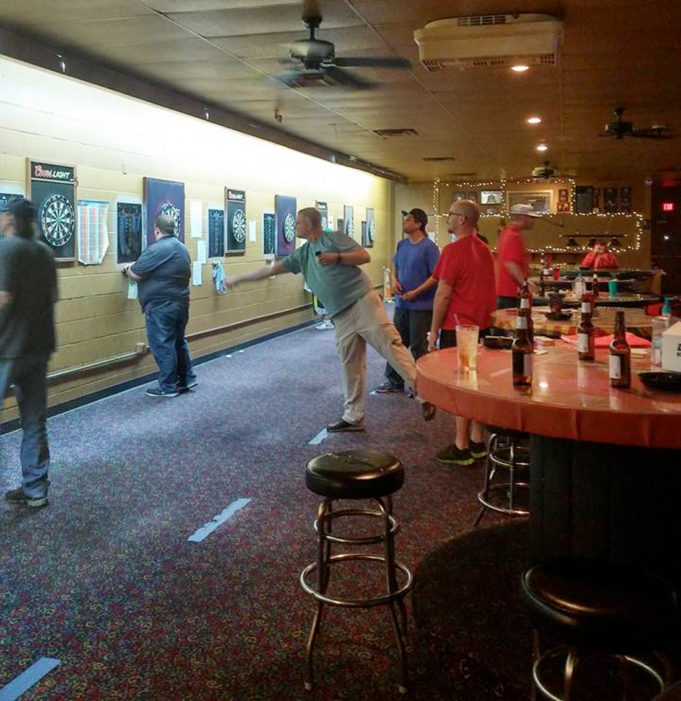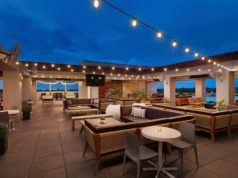I recently watched about half of South Park’s most recent season, which includes an episode targeting gentrification called “The City Part of Town.” It got me thinking about the real estate and retail development on the Near Southside and how the land south of Heritage Trace Parkway and in between I-35 and North Riverside Drive is a near-endless loop of trendy big-box restaurants and stores bordered by high-end apartment complexes. There are entire towns that could fit in the parking lots alone. It’s dizzying to think about.
The thing is, I don’t even know what that part of the world looked like before, nor could I tell you how Magnolia and Fairmount used to be besides some fuzzy memories of The Fairmount, which was a rock club on East Magnolia. I’m told most of the Near Southside was a haven for vagrants, and barring a few places like the Chat Room and King Tut, there wasn’t much to do over there unless you wanted to pick a fight with a homeless person.
You can argue the pros and cons of what the neighborhood is now compared to its essence in days of yore, who lives and works and spends over there now versus then. I’ve thought about both sides of the issue, but rather than settle it for me, what the mental tit-for-tat actually did was make me wonder if there is a part of town that is simply impervious to gentrification.
If there is a way to bet on this within some reasonable parameters, I’d like to put $100 on Camp Bowie West. Cross west over Alta Mere, and all traces of craft culture pretty much evaporate. Instead of tap houses and “kitchen + libationarium”-type places, vape shops and tattoo parlors are about the only things that can take root. The strip clubs might change their names and refinish their bar tops, but, overall, that part of town seems like it will forever remain a relic of mid-century commercial aspirations, a patch of country where the paint is forever peeling but never so much that you can’t tell what color the walls once were.
Take Shucker’s Sports Bar, for example. Once upon a time, the business was on Camp Bowie, in a space now occupied by a day spa, in a shopping center that includes a nice Vietnamese restaurant and an up-market pet supply store. Long ago, it moved west down Camp Bowie, to a strip mall near where the boulevard intersects with Cherry Lane. Inside, the years have piled up. The walls, painted the color of powdered Nesquik, look as if they’ve been touched-up over the years, but I get the impression that if the owners gave the joint a facelift, its regulars would cry foul.
For one thing, the clientele is best described as “white mustache.” Not because everyone there was white and had a mustache (though both were predominantly the case), but because if a man wore a mustache, that mustache was white. Other than a couple of women who looked to be in their 30s (one of whom seated with a group of older people at one of the bar’s spool-like cocktail tables, the other dealing a poker game), most of Shucker’s patrons were old enough to be retired. They were all having a blast, especially when the bartender got everyone’s attention for some kind of free-drink drawing. Given the way one of the winners enthusiastically yelled across the room at some people he knew (and it’s a big room, so he had to really open his throat), Shucker’s seems like the place where everyone knows everyone else’s names. And those of their kids, and their pets, and who to call should someone suffer a heart attack in the middle of a darts game.
I wouldn’t say the bar is “locals only,” but that kind of bar-wide camaraderie across a fairly uniform demographic segment suggests to me that any improvement to Shucker’s that might invite a newer, presumably younger crowd might not be all that welcome. Per the gentrification critiques presented in “The City Part of Town,” maybe that’s actually a good thing. So maybe if you want to keep the yuppies and their beer gardens out of your neighborhood, you need to import some old folks into a bar into which they will deposit themselves with clockwork regularity. Until then, if you need an escape from hipsteriffic eating and drinking trends, spend some time and money along Highway 80. It might not look like much, but it still has everything you need. –– Steve Steward
Follow Steve @bryanburgertime.












